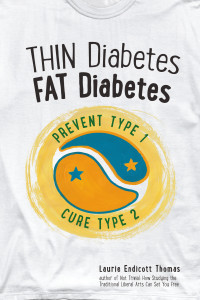Dr. William C. Roberts on LDL Cholesterol
The Institute of Circulatory and Respiratory Health has discovered nine modifiable risk factors that make up 90% of the risk of having a first heart attack. They include smoking, too much bad (LDL) cholesterol, high blood pressure, diabetes, abdominal obesity, stress, lack of daily fruit and vegetable consumption and lack of daily exercise.
You might look at these factors and think “hey, I’m doing pretty well”. You don’t smoke, you work out regularly and even have flat abs. You eat daily fruits and veggies and you’re as cool as the proverbial cucumber. Your blood pressure is great and you don’t have diabetes.
If the above paragraph describes you, give yourself a pat on the back – you’ve done a great job of avoiding eight of the nine risk factors. But don’t spend too much time congratulating yourself, – at least that is what Dr. William C. Roberts would probably tell you.
Dr. Roberts is the Executive Director of Baylor Heart and Vascular Institute and long-time Editor in Chief of the American Journal of Cardiology. He has spent over 50 years investigating Coronary Artery Disease. He is convinced that the ninth factor, – too much LDL cholesterol, is the single cause of coronary artery disease and that the other so-called atherosclerotic risk factors are only contributory at most.
There are, in Roberts’ opinion, 4 facts supporting the contention that atherosclerosis is a cholesterol problem:
1) Atherosclerosis is easily produced experimentally in herbivores (monkeys, rabbits) by giving them diets containing large quantities of cholesterol (egg yolks) or saturated fat (animal fat). Indeed, atherosclerosis is one of the easiest diseases to produce experimentally, but the recipient must be an herbivore. It is not possible to produce atherosclerosis in carnivores (tigers, lions, dogs, etc.). In contrast, it is not possible to produce atherosclerosis simply by raising a rabbit’s blood pressure or blowing cigarette smoke in its face for an entire lifetime.
2) Atherosclerotic plaques contain cholesterol.
3) Societies with high average cholesterol levels have higher event rates (heart attacks, etc.) than societies with much lower average cholesterol levels.
4) When serum cholesterol levels (especially the low-density lipoprotein cholesterol [LDL-C] level) are lowered, atherosclerotic events fall accordingly and the lower the level, the fewer the events (“less is more”). Although most humans consider themselves carnivores or at least omnivores, basically we humans have characteristics of herbivores
We’ve known for a while that the ideal level of LDL is between 50 and 70 mg/dl – that’s if you would like to essentially make yourself heart attack proof. The Adult Treatment Panel III (ATP III) guidelines state that <100 mg/dl is optimal and that 120 – 129 mg/dl is near optimal.
Why don’t the ATP III guidelines reflect the ideal LDL levels?
According to the federal government, it’s because almost every adult American would need to be on a high dosage statin drug. This would financially overload the health care system. It doesn’t occur to the federal decision-makers that drugs aren’t the only way to get our LDL to ideal levels. People eating low-fat whole food plant based (WFPB) diets can often keep their LDLs under 70 mg/dl.
Another reason the federal government gives for not advocating what the science shows is best is that it might frustrate the public who would have difficulty maintaining a lower LDL level. Perhaps if the feds strongly promoted an optimal diet, a surprising percentage of Americans might decide to make significant dietary changes. Even if only 10% adopted a low fat WFPB diet, it would lead to more than 50,000 fewer Americans dying of a heart attack each year. It seems it would be worth frustrating some folks to me. As far as I know, no one ever died from frustration.
If you’d like to learn a bit more on Dr. Robert’s thoughts, check out this seven minute video.
Stay Healthy and Strong!






 E Excerpt from Laurie Endicott Thomas’s amazing book Thin Diabetes – Fat Diabetes by clicking here!
E Excerpt from Laurie Endicott Thomas’s amazing book Thin Diabetes – Fat Diabetes by clicking here!
Speak Your Mind